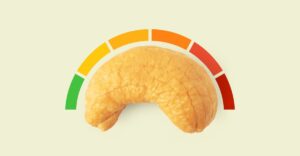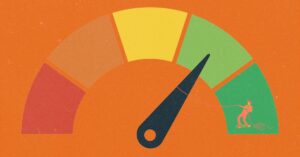12 ways to lower blood pressure

[ad_1]
Your blood pressure may have been in a normal range for most of your life. Then at your last doctor’s visit, you learned your blood pressure numbers are elevated or high. You want to know why this happened, and what you should do about it.
Your blood pressure levels are affected by your age, eating habits, activity levels, stress level and other factors. It’s very common to have high blood pressure – about half of American adults do. But if high blood pressure isn’t treated, it puts you at increased risk for a heart attack, heart failure and other vascular conditions.
The good news is that healthy habits and lifestyle changes can make a big impact on your blood pressure (and overall health) almost immediately and in the years to come. Read on to learn about ways to lower blood pressure naturally and blood pressure medications that may help.
12 ways to lower blood pressure
There are many ways to lower your blood pressure naturally. There are also numerous medications that can help you get your numbers into a healthy range.
So, what blood pressure numbers should you target? Normal blood pressure is lower than 120 systolic (top number) and 80 diastolic (bottom number). But talk to your primary care doctor about what numbers make sense for you.
1. DASH into a heart-healthy diet
There are plenty of ways to lower your blood pressure through your food choices. You’re likely to see improvements by eating more nutrient-rich foods like fruits, veggies, whole grains and lean proteins – and eating less salt, sugar and saturated fat. For even better results, consider following the Dietary Approaches to Stop Hypertension (DASH) diet, which focuses on choosing foods that are:
- Low in saturated and trans fats
- Rich in potassium, calcium, magnesium, fiber and protein
- Lower in sodium (salt)
Remember, you don’t have to change everything all at once. Begin by taking small steps – one way to start out is by aiming for a vegetable at every meal. Over time, add in more of the DASH diet. The goal is to create a heart-healthy diet you can stick with for years to come.
2. Limit sodium that you eat
We mentioned reducing salt in the section about the DASH heart-healthy diet, but it’s so important that it’s worth repeating. Eating too much salt is one of the biggest risk factors for high blood pressure. The good news is that even small decreases in your salt intake can make a big difference. (Of course, the less salt you eat, the greater the benefit.)
Most Americans eat too much sodium – on average 3,400 milligrams (mg) each day versus the federal recommendation of less than 2,300 mg. This salt comes to us in different ways, according to the American Heart Association.
Some foods, like celery, beets and milk naturally contain salt – this accounts for about 15% of the food we eat. The salt we add at the dinner table is about another 11%. So where does the rest of the salt come from? Prepackaged foods and restaurant foods. That’s why it’s so important to read nutrition labels, cook at home more often and research heart-healthy options for eating out.
3. Exercise regularly to strengthen your heart
You likely know that aerobic activities like walking, biking and swimming make your heart stronger, but those aren’t the only exercises great for heart health.
Isometric exercises are especially good for lowering blood pressure, according to research. Isometric exercises are a type of strength training where you contract your muscles without changing their length or moving your joints. This means that your work your muscles by holding a certain position. One example is a plank, where you get into a push-up position, but you don’t go up and down. Instead, you keep your body straight while resting on your forearms for as long as possible.
No matter the type of exercise or activity you choose, aim for a total of 30 minutes of movement most days to get the best benefits of exercise. But you don’t need to worry about getting in 10,000 steps – research shows that 3,000 steps each day may be enough for heart health.
For exercise to help with managing your blood pressure numbers over the long term, you’ll need to find ways to make exercise part of your routine, so find something you enjoy. Even better, find an exercise buddy!
4. Manage stress
Stress isn’t good for your heart. Your blood pressure goes up when you’re under stress. And if you continually have high stress levels, it can increase your risk of heart disease, so take steps to reduce or avoid the situations or things that trigger stress. If you’re doing too much, find ways to carve out some space on your calendar to relax. If you find yourself worrying, try to focus on the things that you can control.
It’s also a great idea to find ways to relieve stress, such as deep breathing exercises, meditation, exercise, finding time to relax and practicing gratitude. Just a few minutes can make a difference.
If managing stress is a struggle, talking to a therapist can help. They can help you understand what’s causing your stress and develop strategies to help you lower your stress.
5. Lose extra pounds or maintain a healthy bodyweight
Blood pressure numbers often go up as weight increases. Carrying extra weight around your middle is especially likely to increase blood pressure numbers. Having a higher weight also makes it more likely that you’ll have other conditions, like sleep apnea, that can increase blood pressure numbers.
Losing even a few pounds can make a big difference. But losing weight, and keeping it off, is often easier said than done. While going on a diet may provide fast results, the weight is likely to come back once you stop the diet.
However, it’s possible to lose weight and keep it off by making long-term changes to your eating habits. Actually, many people naturally lose weight after switching to the DASH diet or similar eating plan. If you’d like to lose weight, make an appointment with a primary care doctor. They can help you come up with a personalized plan you’re more likely to stick with.
6. Limit alcoholic drinks
Alcohol increases blood pressure, and even moderate drinking can impact heart health. Drinking alcohol has also been associated with resistance to blood pressure treatments. Drinking can make blood pressure medications less effective, and people who drink can be less likely to take their medications.
Women should try to limit themselves to one drink a day. Men should aim for no more than two.
7. Get quality sleep (and at least six hours a night)
If you get less than six hours of sleep each night for several weeks or more, you have an increased chance of getting high blood pressure. And if you already have it, sleep deprivation can make your blood pressure climb even higher.
Make good sleep (and sleep hygiene) a priority. Try to avoid watching television, playing on your phone and drinking lots of liquids before bed. If conditions like insomnia or sleep apnea are getting in the way, consider talking to a sleep medicine doctor.
8. If you smoke or use tobacco products, take steps to quit
Every time you consume tobacco, it temporarily increases your blood pressure. Frequent use of tobacco products can keep your blood pressure high throughout the day. Using tobacco products also increases the chance of cancer, heart attack, stroke and vascular problems.
If you smoke or vape, quitting is one of the best things you can do to improve your blood pressure levels and your overall health. But it’s not easy to quit. If you need help, start by talking with your primary care doctor.
9. Drink water
Dehydration affects how blood flows through your body. This can cause your blood pressure to jump between being too high and being too low. It’s not healthy for your blood pressure to go up and down like that. Staying hydrated helps avoid big jumps and drops in blood pressure.
You’ve likely heard that you should drink eight classes of water a day, and that’s a good starting point. But you may need more or less depending on factors such as gender, size, metabolism, activity level and where you live.
A good rule of thumb is to drink when you’re thirsty. Also, look at your urine color – it should be a pale or medium yellow color and clear, with a subtle pee odor. If your pee is dark yellow or amber, you likely need to drink more.
10. Consider vitamin and mineral supplements to lower blood pressure
It’s possible that mineral and vitamin supplements may help you lower blood pressure. These supplements include potassium, calcium and magnesium (the minerals prioritized in the DASH diet). Also on the list are vitamin B, vitamin C, vitamin D, coQ10, L-arginine, beetroot, garlic, fish oil, probiotics, melatonin, green tea and ginger.
While it’s always best to get nutrients from the foods you eat, there may be times when supplements are a good option for you. But make sure to talk with your primary care doctor before taking any of them. They can make sure that they’ll work with your other medications and recommend a dose that’s safe for you.
11. Talk to your doctor about blood pressure medications
If you’re not able to get high blood pressure down with lifestyle changes alone, your doctor may recommend blood pressure medications. These medications start lowering your blood pressure almost immediately, but it can take a few weeks to see the full impact. If your blood pressure doesn’t get into the normal range on the first try, that’s okay. Your doctor may adjust your dose or recommend you add or switch blood pressure medications. It’s also important to remember that even if you take medication for high blood pressure, you’ll probably still need to make some lifestyle changes.
Medications for stage 1 or stage 2 hypertension include:
- Alpha, beta and alpha-beta blockers – Stop epinephrine and similar hormones from affecting the cardiovascular system, allowing the muscles of the heart and arteries to stay relaxed.
- Alpha-2 receptor agonists – Decrease the activity of the part of the involuntary nervous system that produces adrenaline.
- Angiotensin-converting enzyme (ACE) inhibitors – Stop the body from producing angiotensin, a hormone that narrows blood vessels.
- Angiotensin II receptor blockers (ARBs) – Stop angiotensin from affecting blood vessels.
- Calcium channel blockers – Help keep arteries relaxed by preventing calcium from entering heart and artery cells.
- Diuretics – Reduce excess sodium and water in the body.
- Vasodilators – Prevent artery and vein muscles from narrowing.
It’s most likely that your doctor may start with an ACE, ARB, calcium channel blocker, diuretic or a two-drug combination depending on your blood pressure goal.
12. Monitor your blood pressure at home
Keeping track of your blood pressure levels is helpful to see if the changes you’ve made are working. The easiest way to do this is to measure your blood pressure using a home-based digital blood pressure monitor. These monitors are widely available without a prescription. Most monitors run between $40 and $100, and insurance may cover part of the cost.
You’ll want a monitor with a cuff that goes around your arm and inflates by itself. It’s also helpful if the monitor stores blood pressure readings or sends the information to a smartphone so you can look at blood pressure trends over time.
Talk to your doctor about home monitoring before you get started. They may have recommendations for home blood pressure monitors and can provide tips on how to get accurate readings. Plus, they’ll let you know what numbers you’re trying to reach and how often to take your blood pressure (usually a few times a week is enough).
Ready to lower your blood pressure? Start with a primary care doctor
Managing your blood pressure is an important part of heart health and overall health. If you’d like help lowering your blood pressure numbers, make an appointment with a primary care doctor. They’ll put together a personalized treatment plan to help you achieve healthy blood pressure levels and support you along the way. If appropriate, they’ll refer you to a specialist, like a cardiologist or nephrologist for more advanced care.
[ad_2]
Source link


